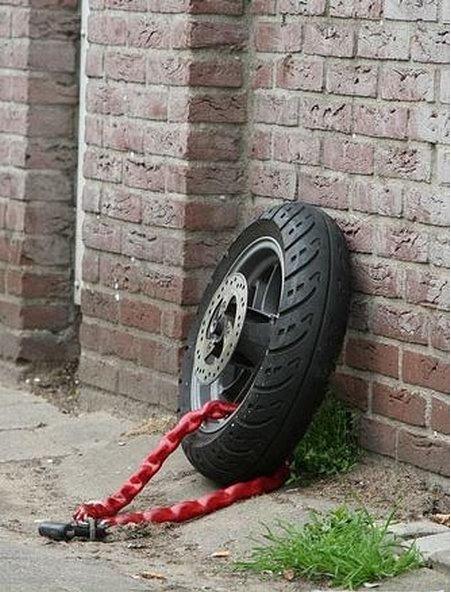5) Skull Motorcycle
Call it crazy or amazing, this skull motorcycle gets a whole lot of attention, and it deserves every little bit of it. The motorcycle’s fuel tank has been converted into a skull, one with a wicked aura but still done very well. Headlights have been moved to the eyes of the skull, enhancing its “fear factor.” This would make the “Ghost Rider” look less clumsy, but seeing the way the movie went, even this it isn’t really going to help much. More images after the jump
4) Wierd Toon
I have no idea who made this or anything about it. But if someone will chase people down the street on halloween, they’ll never watch cartoons again!
3) Extreme Corpse Motorcycle
This custom motorcycle is a gory mess with its fuel tank sculpted like a shattered ribcage, with the skeleton’s hands reaching for the front wheel and its legs resting near the rear wheel. Its fuel tank even has the heart dangling by the side of the fuel tank
2) The Bone Bike
This incredible piece of artwork, save for the Yamaha 650 engine and a few other bits, is made from "scrap, trash and garbage." More remarkable is the fact that the owner/builder is disabled and has severely arthritic hands. And yes: This is a working motorcycle that's ridden on a regular basis. The demon head and fender tail each contain over 150 pieces
(I didn't see the seat at first (ouch!).. It almost made it to number 1 until I found it)
1) Custom Alien Chopper
This badass motorcycle looks like it's straight out of a Ridley Scott film set - but remarkably an artist has made it out of spare parts. The Bangkok worker used recycled materials from old cars and bicycles to create a monster machine which is sculpted to look like a beast.
Despite being cobbled together from scrap parts, the spectacular motorcycle works - unlike many sci-fi film props. Roongrojna Sangwongprisarn, 54, created it out of spare parts in his workshop in Thailand. He has four shops across the country - named the Ko Art Shop - and exports his creations to clients all over the world.
(Extra points for recycling!)
I believe that there needs to be more horror themed custom bikes out there, so I'll offer a few suggestions for those reading talented in building:
- Shark Bike
- Scarecrow Bike
- Evil Clown Bike
- Freddy and/or Jason Bike
- Arachnid bike
- Rosie O'Donnell Bike
Any other ideas? Post yours in the comments!
Sources:
horrorbid.com
motorcyclecruiser.com
automotto.com
Grab The Bookmarketer For Your Site







